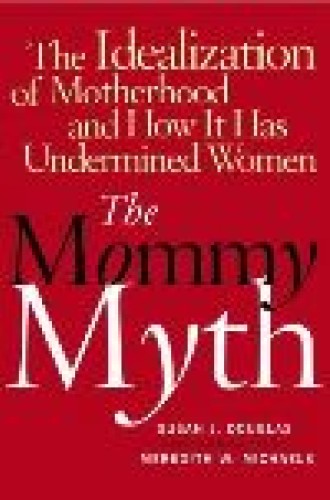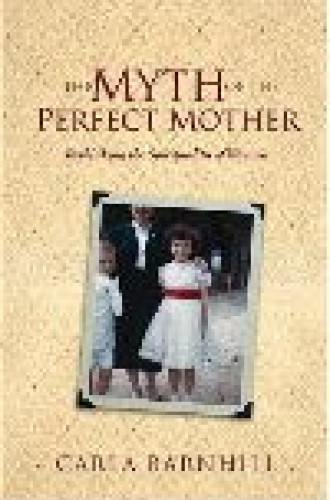Moms' malaise
My friends and I pride ourselves on not being status-conscious suburban moms. We don’t try to replicate Martha Stewart’s cupcake icings, we don’t throw themed birthday parties with paid entertainers, and we don’t worry about whether our three-year-olds’ preschools are sufficiently rigorous to prepare them for Yale. In other words, we’re not the perfection-obsessed control freaks that Judith Warner portrays in Perfect Madness.
We do, of course, have our own obsessions. We feel guilty when our kids watch TV, and we worry over how to get them through Valentine’s Day red-dye free. We feel just as righteous when we live up to our own maternal standards of perfection, just as guilt-ridden when we don’t.
Anxiety, fear, exhaustion, guilt, self-doubt, anger—these are the hallmarks of modern motherhood in America, according to Warner and other recent authors. It’s been called the mommy mystique, the new momism, intensive mothering, total-reality motherhood or simply, as Warner puts it, “the Mess.” Whatever it is, Warner and her colleagues claim that this obsession with perfection is sapping women of energy and resources that could be channeled into activism for family issues like health-care benefits, maternity leaves and child care.
The real story of contemporary American motherhood isn’t the media-hyped catfight between stay-at-home moms and working mothers that, as Susan Douglas and Meredith Michaels write in The Mommy Myth, allows “the politicians who’ve failed to give us decent day care or maternity leave” to “go off and sip their sherry while mothers point fingers at each other.” The mommy wars are mostly a fiction. Women move back and forth between employment and home, and women who consider themselves stay-at-home mothers may work the same number of part-time hours as women who identify themselves as working moms. No, the real story is that motherhood has become a stress-laden and guilt-ridden project due to the societal veneration of stay-at-home moms, the workplace requirement that women be overachievers just to stay even with their male colleagues, economic anxiety about class standing and, above all, government and corporate refusal to devise family-friendly policies.
At least this is the story in the United States. Warner sets up her first chapter as a comparison between mothering in the United States and mothering in France, where she lived for several years. There she found high-quality, affordable preschools, complete with government subsidies and sliding-scale fees. There she encountered mothers with four months of paid maternity leave, the right to cease employment for up to three years and have their jobs held for them, and cash grants from the government during the time they stayed at home. There she found a culture in which “the needs of the mother were considered every bit as central to family happiness as the needs of the child.”
What she found in the United States was much bleaker. Here she met women obsessed with trivialities, driven by perfectionism and guilt and, most of all, filled with a diffuse dissatisfaction. Unable to find adequate and affordable child care for her own daughter, Warner sensed that her dream of maintaining a professional life while having time for her family was crumbling, and she soon found herself developing the same “quiet panic” as the mothers she was meeting at the playground.
Douglas and Michaels paint their own picture of a mother’s utopia, set not in France but in an earlier era of U.S. history. They tell us that during World War II, when 6 million U.S. women entered the workforce, government-supported child-care centers offered on-site immunizations, care for kids whose parents worked the late shift and even take-home dinners. Then the war ended, and so did the political will to fund day care. Too communist, said some. Too expensive, said others (an argument that politicians still use, apparently forgetting that we’ve managed to scrape together at least $150 billion to invade and occupy Iraq). So here we are in 2006, with parents piecing together a patchwork of arrangements to care for the kids while they’re at work, and with only the richest having access to high-quality child care.
You can argue about these authors’ definitions of utopia. What is less debatable is the way economic class defines women’s experience of motherhood in the United States. Beyond the diapers and tantrums that unite mothers across class lines are the real markers of class: Can you choose to stay home with your kids? Do you have access to affordable and high-quality child care? Do you have the security of a flexible schedule and an employer who won’t fire you for taking a day off to care for your sick child?
Douglas and Michaels choose to foreground class in their analysis, devoting their strongest chapter to an examination of the media’s construction of the “welfare mother,” especially during the 1990s. Depictions of women on welfare only fueled the new momism, they claim, by creating “delinquents who dramatized what happened to those who failed to comply, delinquents other mothers could feel comfortable about putting in detention.” Welfare mothers occupied one side of “the maternal media diptych, opposite the celebrity mom” so celebrated in women’s magazines and TV features. It was fine, even a tad chic, to stop working when you had kids and even to have multiple fathers for your children—as long as you were rich, white and famous.
Carla Barnhill makes a similar point in The Myth of the Perfect Mother: “I’ve never been able to figure out why there are those who insist that mothers stay home with their children unless they are poor, in which case they better go out and get a job to support their children.”
Warner, on the other hand, essentially elides the issue of class. She interviewed 150 women, mostly white, middle-class and college-educated. She offers a trickle-down theory of why it’s appropriate to leave working-class and poor women out of her analysis: everyone in the U.S. mimics the spending habits and competitiveness of the upper middle class. Through movies, magazines and advertising the upper middle class has become “our reference point for what the American good life is supposed to look like and contain.”
True enough. But it’s a shaky assumption that just because poor and working-class women are exposed to the lifestyles and tastes of the wealthy they are also susceptible to the neuroses of the wealthy. Interviewed for the Mothers Movement Online, clinical psychologist Daphne de Marneffe suggests that it’s disingenuous to focus so narrowly on wealthy women’s “obsession with externals and appearances and competition” and then turn around and ask, “‘Does anyone have an inner life?’ The way you’ve picked your topic and constructed your argument guarantees that you’ve left out the very terms that could question and subvert and discredit the reality you’re describing.”
Rarely have I read writers as witty and sardonic as Douglas and Michaels, who proudly call themselves “mothers with an attitude problem.” I have a hunch Warner would also claim that label. Douglas and Michaels excoriate just about everybody they mention in their analysis of three decades of popular-culture representations of motherhood. Through detailed examination of TV shows, movies, news reports and women’s magazines, they make a convincing and disturbing case for the existence of the new momism. Yet in their irritation at the media’s veneration of the self-sacrificial mother, Douglas and Michaels end up revering “anti-mothers” on television like Peg Bundy of Married . . . with Children and Rosanne Barr of Roseanne for their mouthy resistance to all things domestic and subservient. They also attribute negative intent—or at least uncritical cultural consumption—to everyone from conservative Christians (who are determined to “return all women to the barefoot-and-pregnant era of world history”) to leftist attachment-parenting types (who are making “homemade baby lotion out of elderberry extract”).
One could argue that such portraits are part and parcel of their hilariously hyperbolic writing style, but such obviously overdrawn characterizations reinforce the reader’s feeling that the authors’ only definition of a good mother is that of a mordant political activist with their particular brand of feminist conscience.
While I agree that the sacralization of motherhood has been harmful to women’s sense of themselves, I wonder whether the authors’ testy and sarcastic tone might end up paralyzing the very women they wish to empower. In their depiction of how media, politics and culture destabilize mothers’ selves, they risk obliterating the agency of the very women for whom they are advocating.
I, for one, emerged from the steel-wool abrasiveness of both books feeling rubbed raw, exhausted and, especially, angry: at advertisers and senators, at my husband for his professional successes, at myself for my choice to stay at home, and at my children for being, well, children. Apparently my life is a cliché—the ’70s girl turned careerist turned stay-at-home mom who has been duped by the media and abandoned by the government. Yet I still had no more knowledge about how to change anything—and no more ability to do so—than when I first opened each book. Despair and anger may be valid responses to the present predicament of women, but they aren’t always the greatest motivators.
Like these authors I find comfort in imagining a utopia in which the projects of making a family and making a living fit together more smoothly. And like them I have found sarcasm and disdain to be shields against the many pressures of 21st-century motherhood. But while I value their sociopolitical analyses and share their anger at the complex forces that make sane mothering almost impossible these days, I find little in their books to give me strength and hope for the journey—the strength and hope that are exactly what mothers need to resist the powers the authors describe. Indeed, after reading about the plague of exhaustion facing mothers, I felt too exhausted to do much of anything.
Enter Carla Barnhill. Although her audience is narrower than those of the other authors—she speaks mostly to women in evangelical Christian circles—and her analysis is a tad simplistic, Barnhill writes with a pastoral style that is soothing after the acerbic tone of the other two volumes. She uses a language of faith that I hadn’t realized I was missing when I read the other two books. Although many readers will be put off by her evangelical jargon—and I admit to some bewilderment at it—I found her language reassuring in its emphasis on the family as something more than the nemesis of self-actualized women. Even as she resists churchly and societal constructions of the perfect mother, Barnhill acknowledges that mothers may be intentional about their nurturing and caretaking work for reasons other than a need to live up to some impossible cultural ideal.
In their scramble to free mothers from the demons of domesticity, Douglas and Michaels seem unwilling to acknowledge the value of parents intentionally creating family space and time and rituals that nurture children. Barnhill doesn’t tell women to stay home baking bread and doing macramé. Far from it. She spends two chapters arguing that the church’s idolization of stay-at-home motherhood has heaped “minivan loads of guilt on [employed] women who are doing their best to manage their many roles” and who are doing the work to which God has called them. But she also doesn’t shy away from words like sacrifice and humility just because those words can be used against women.
Ironically, although Barnhill spends less time outlining the cultural and political forces that shape mothers’ realities, she does more to inspire me to action—even political activism—than the writers of the more explicitly political volumes.
After exploring how to resist the unique pressures that evangelical mothers face—pressure to homeschool, to use corporal punishment, to view motherhood as their highest calling—Barnhill fleshes out the idea of motherhood as a spiritual practice similar to prayer and fasting. Drawing on the work of philosopher Alasdair MacIntyre, Barnhill encourages readers to view parenting as a spiritual practice through which God shapes us rather than as “a role filled with high expectations and the resultant disappointments.” Citing examples of Christian mothers who were instrumental in the abolition of slavery and the passage of laws against child labor, she makes a strong case that virtues such as compassion and creativity that are “refined in the practice of motherhood can and should be used in other arenas to bring God’s love, peace, mercy, and justice to the world.” In other words, who I become as a mother can filter into other arenas of life, including activism on behalf of other mothers and their children.
Barnhill is not a scholar. She’s the editor of Christian Parenting Today, which situates her smack in the middle of evangelical America. For those not located in conservative Christian circles, her points will seem obvious and a bit pedestrian. Readers looking for a nuanced discussion of how the institution of motherhood has been constructed and maintained should go to one of the first two volumes. Yet Barnhill’s idea of parenting as a practice of spiritual formation offers a more profound possibility for resistance—and even transformation—than the other authors’ polemics. For example, the others admit to falling prey to the very phenomena they describe: “buying those black-and-white mobiles that allegedly turn your baby into Einstein Jr.,” as Douglas and Michaels confess, or obsessing over whether to choose the basic or deluxe Hello Kitty birthday party package, as Warner acknowledges she has done. As Faulkner Fox puts it in her 2003 memoir, Dispatches from a Not-So-Perfect Life, “I could have written a great paper critiquing this kind of advertising and advice-wielding before I became a mother,” but “as a mother, part of me fell subject to it.”
Social criticism can loosen the ropes of this double consciousness. Yet as these authors admit, and as my friends and I find when we eschew middle-class momness, it cannot completely undo them. This is where Barnhill’s micro-level suggestions start to sound significant. Perhaps finding one’s identity in God’s love rather than in attainment of some extrinsic standard of perfection is more than the living out of a truism—perhaps, in this climate of intensive mothering, it’s more like a survival skill. Maybe the idea of motherhood as a spiritual practice, in an era in which advertisers regard motherhood as a market, is a lot more political than it sounds.
This is a point to which I wish Barnhill had given more than cursory attention. Granted, her goal is smaller and more focused than those of the other authors: to “pull back the curtain on the lives of real women, women who feel stifled, stuck, and stranded by the expectations of Christian motherhood.” Yet I think she gives too little consideration to the profound connection between mothers’ political activism and mothers’ spirituality, thereby missing an opportunity to contribute to the broader motherhood movement that is burgeoning outside of the church and could be strengthened by such a discussion.
One could argue that the recent spate of books on the stresses of motherhood amounts to just so much whining by a bevy of privileged, highly educated women with a surfeit of professional options and material wealth. But let’s hope that Barnhill’s vision is not entirely in vain. The formative practice of motherhood, even in America’s middle-class wasteland of competition and consumerism, might form women into more compassionate, caring—and yes, even angry—citizens who advocate on behalf of all women, especially those with fewer options. Through a holy blend of social criticism and spiritual fortitude, women with children might be able to resist the guilt and perfectionism that, if these authors are correct, are now the signatures of motherhood.







